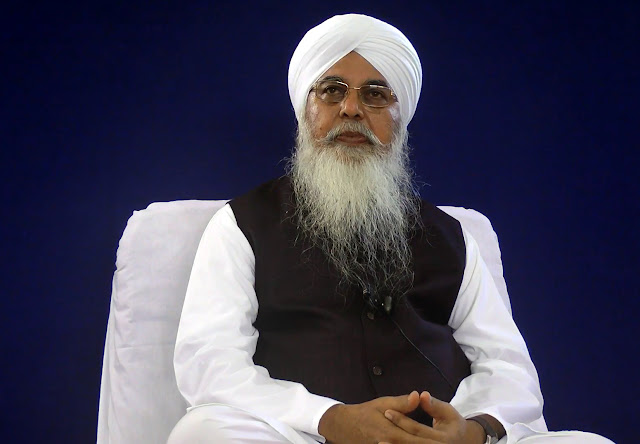The Gnostic Demiurge vs. The God of Love (KAL Mat vs. Dayal Mat) - Anurag Sagar Studies - Spiritual Awakening Radio Podcast
Used as the image for this satsang podcast, image credit, an illustration from, The Anurag Sagar. Notice the souls depicted as being held captive inside the Palace of Kal, the lord of time and illusion (called "the Demiurge" by the Gnostics). The Satguru does battle with Kal to free the souls. The genuine Living Teacher, the Sant Satguru, guides his or her students through this internal struggle with the mind or ego (the agent of Kal in the matrix of mind), this labyrinth of self-sabotaging, limited belief-systems of the negative power (Kal Mat: the teachings of Kal), so that the initiates may experience Divine Love, Light and Sound within and follow the Path back to God (Dayal, the Merciful One), the Ocean of Love.
The Demiurge vs. The God of Love (KAL Mat vs. Dayal Mat) - Spiritual Awakening Radio Podcast @ YouTube:
The Demiurge vs. The God of Love (KAL Mat vs. Dayal Mat) - Spiritual Awakening Radio Podcast - Play or Download MP3 @
https://traffic.libsyn.com/spiritualawakeningradio/The_Demiurge_vs_The_God_of_Love.mp3
@ the Podcast Website - Also With Buttons That Take You To the Popular Podcast APPS - Wherever You Follow Podcasts:
https://SpiritualAwakeningRadio.libsyn.com/the-demiurge-vs-the-god-of-love-kal-mat-vs-dayal-mat
@ Apple Podcasts:
@ Spotify Podcasts:
https://open.spotify.com/episode/13Af3Dg1RmWGbvxH01ytOX
& @ Wherever You Subscribe and Follow Podcasts - At Your Favorite Podcast APP Just Do a Search for "Spiritual Awakening Radio" - (Youtube, Youtube Music, Apple Podcasts, Spotify, I Heart Radio, Audible, Pocketcasts, Overcast, PodBean, Jio Saavan, etc...)
https://linktr.ee/SpiritualAwakeningRadio
Today we explore the following, a outline or playlist of what we're covering during this satsang podcast: mystic poems of Sant Dadu Dayal of Rajasthan: The Results of True Love, and, The Vision of the Beloved; a saying from the Gnostic Gospel of Judas which sounds a bit like a Rumi poem; definitions of the term "Demiurge" from Platonism, Gnostic Christianity, Judaism, and the Sant Tradition of India; definitions of the eastern term for the Demiurge: the Kal Niranjan: a false god, negative power, lord of time and illusion as described in footnotes by Russell Perkins in the English edition of a key Sant Mat spiritual classic, India's most Gnostic scripture: The Anurag Sagar (The Ocean of Love, about the teachings of Kabir and Sant Dharam Das); Kal Mat vs. Dayal Mat, Illusion vs. Truth, by Shiv Dayal Singh, also known as Swami Ji Maharaj of Agra from his collection of mystic verses called the Sar Bachan Radhasoami Poetry; also a description of Swami Ji's meditation room-within-a-room and on how we too can create our own meditation space at home; several mystic terms are defined based on the Glossary of Sant Mat and additional footnotes from, The Anurag Sagar; a satsang discourses by Hazur Baba Sawan Singh titled, What's Really Going On Here -- During This Life the Disciple or Devotee Contends With Mind as They Attempt to Merge into the Positive Power; a satsang discourse by Baba Ram Singh titled, If You Really Resolve To Have A Desire To Go Within And Transform To God Almighty, That Is Possible In This Human Form; and I conclude with mystic poetry verses from: Sant Ramdasa of Maharashtra, Maharshi Mehi Paramhans from his Padavali (Hymn 135); a reading from the Sukhmani of Guru Arjan Dev, also from Guru Ram Das (both from the Adi Granth, Sikh Scriptures).
The Gnostic Demiurge vs. The God of Love (KAL Mat vs. Dayal Mat) - Anurag Sagar Studies on Spiritual Awakening Radio!
In Divine Love (Bhakti), Light, and Sound, At the Feet of the Masters, Radhasoami (Radhaswami),
James Bean
Spiritual Awakening Radio Podcasts
Santmat Satsang Podcasts
Sant Mat Radhasoami
A Satsang Without Walls
Spiritual Awakening Radio Website:
https://www.SpiritualAwakeningRadio.com/anurag-sagar






